Brightness and gorgeousness is the common fact in Mexican clothes. What do Mexican women wear regularly? Traditional costumes have different types of designs. Some are for holidays, rituals, and festivals. Most of the time, occasions decide the types of traditional Mexican dresses the native will wear. Mexican national dress is sun-protective, vibrant, and modest. Traditional Mexican men’s dress hasn’t altered much over time. But it’s not the same case when it comes to traditional Mexican dress for women.

Native American and European cultures influenced most costumes (mainly Spanish new settlers). Wool, cotton, silk, agave, and bark are used in Mexican apparel. The typical hues are red, yellow, brown, or green. Mexicans used natural components to dye their dresses, which is not required nowadays. This article will discuss women’s traditional dress to make your knowledge prominent. There are some widely popular traditional Mexican dresses that you can wear. So, here are 9 traditional Mexican dresses for women; let’s have a look!
Traditional Mexican Dress Name for Women
Huipil
What is a Mexican dress called? The answer is Huipil. A sleeveless tunic is commonly known as the huipil. It has been worn by ladies throughout Mexico and Guatemala for more than 2,000 years. Various textures and patterns can be created by weaving the huipil on a backstrap loom; purchased fabric can be embellished with embroidery, lace, braid, and ribbons.

There are many different huipil types; some are made from multiple lengths of cloth, while others are made from only a single width. Shorts are worn tucked into skirts or cinched at the waist with longs, the latter of which can reach the wearer’s ankles.
White cotton thread was used to weave this huipil, which has bands of plain and gauze weaving alternated. Red and blue cotton threads create zigzags, chevrons, and lozenges in the brocaded bands.
The garment’s center panel features a red hemmed round neck opening; the garment’s sides are sewn, allowing for enormous openings for the arms. A woven waist sash secures these huipiles into a skirt worn in a wraparound style.
Rebozo
An iconic emblem of womanhood and independence, the long rectangular shape of the rebozo (shawl) developed during the colonial era. Rebozos were worn by Mexican women of all social groups in 19th-century paintings and lithographs. Reservado (reserved) or jaspe (jaspe) is the name given to the ikat technique in Mexico (mottled). It is one of the most popular Mexican traditional clothing females.

In this Mexican dress, Tie-dyeing warp strands before weaving creates color patterns. A dye bath is used to color them after they have been broken up into sets and then tightly tied. The reserved areas are the ones that are covered. The weaver can add more colors by binding fresh pieces and re-dipping.
The designs are carefully aligned before the warp is laid upon the loom. To create a fringe, the final rebozo’s warp threads are knotted on both ends. The rebozo serves various functions, including sun and cold protection, cargo transportation, and the transportation of little children.
Mexican Skirt
Women used to wear skirts that wrapped around their bodies and were secured at the waist with a sash before the Spanish Conquest. It is still common practice in many indigenous groups to construct beautiful examples of this type of skirt by piecing together panels of cloth woven at home.
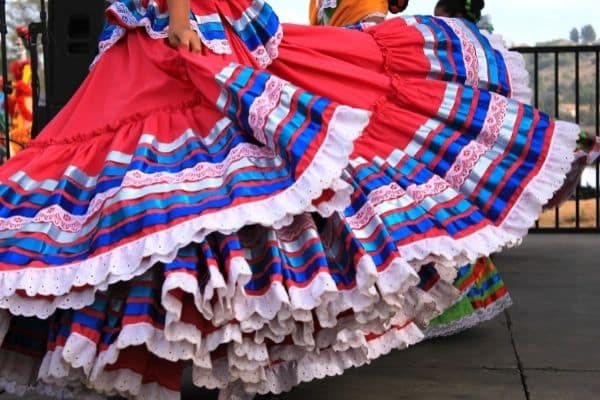
Some skirts are tubular, while others have a rectangular shape and are seamed to make the tube. When the wearer puts on her skirt in the morning, she folds or pleats the fabric into a sequence of arrangements called folds or wrinkles.
Mexican Blouse
The blouse (known as a Blusa or Camisa in Spanish) designed in the colonial style has gained widespread popularity in indigenous communities throughout Mexico. In many places, the huipil has been replaced by this garment, which was inspired by the chemise worn in Europe. In days gone by, blouses were created by sewing together panels of cotton that had been woven at home. Mexican Blouse is regularly worn by the native Mexican among other different types of Mexican dresses.
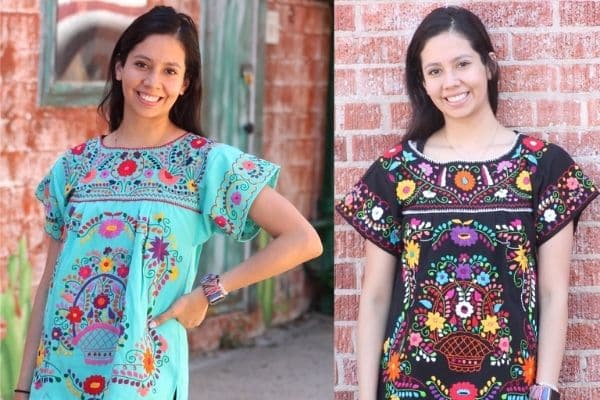
These days, manufacturers rely on commercial materials such as manta (calico), organdy (fine cotton muslin), and popelina (a sturdy plain weave fabric), as well as eye-catching satin-like fabrics in dazzling colors.
While some cotton blouses are designed to have frills and tucks incorporated into their structure, other blouses have a boxy and angular construction. The blouses worn in the Valley of Mexico and the state of Puebla have a boxy appearance. These blouses are defined by their square underarm panels and square necklines.
Clothing of Tehuana
Mexican intellectuals and authorities were looking to develop a sense of nationhood after the revolution. During that time, Tehuana became a cultural sign. It is the most Revolutionary type of traditional Mexican dress used by natives. If someone asked to tell a revolutionary name of Mexican dress, it must be Tehuana for sure.
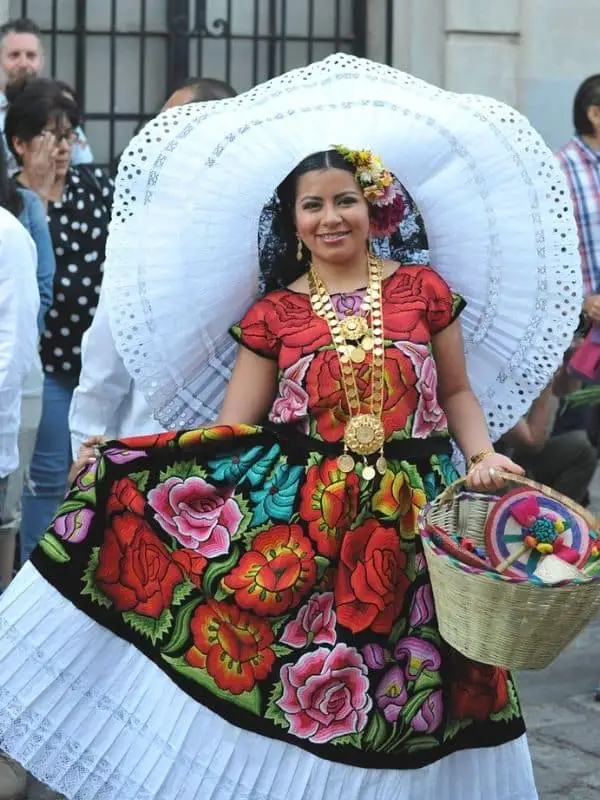
This was the case since the Tehuana was a national treasure. Tehuanas, or Zapotec women who lived on the Isthmus of Tehuantepec, were appreciated for their elegant manner of dress, and this admiration was widely depicted in the popular media. Tehuanas still take great pride in their unique cultural heritage in the modern-day.
China Poblana
When it comes to traditional Mexican dress for women, the china poblana, or Chinese Pueblo in English, is one of the most well-known symbols of Mexican culture. The white shirt, shawl, and broad, multicolored dress of this ensemble have made it famous. The origin of the word “Chinese” is something that many people are unaware of. However, it is the most common popular name among traditional Mexican dresses name.
You may also like: Traditional Clothes China for Men and Women
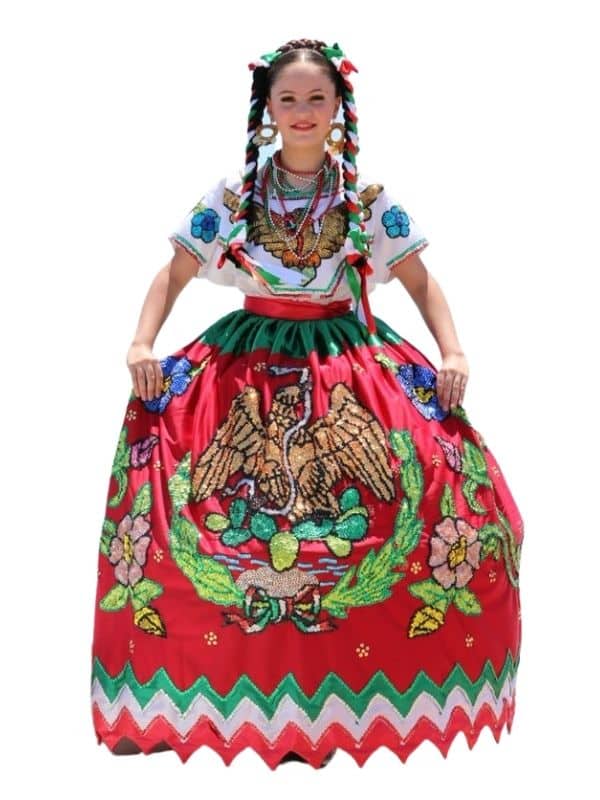
This kind of clothing can be traced back to an Ienslaved Indian named Mirra in the late 1800s. It was in the present-day Indian city of Kochi that Mirra was a slave to a Chinese family. By the time she arrived in Mexico, she had become a devout Catholic and was sold to a Pueblan merchant. Sari, her traditional clothing, would later serve as the basis of today’s sari dress because she was unwilling to give it up. You can still see her tomb in Puebla’s Templo de la Compaa.
Charro
Charro, a Mexican dress name, cames from a Spanish word. When someone comes from Salamanca in Spain, the term “Charro” is used. The term “charro” in Mexico refers to a traditional Mexican horseman. The origins of this traditional Mexican dress name may be traced back to a Salamancan horseman who settled in Mexico. This traditional charro dress is related to the Mariachi musicians.
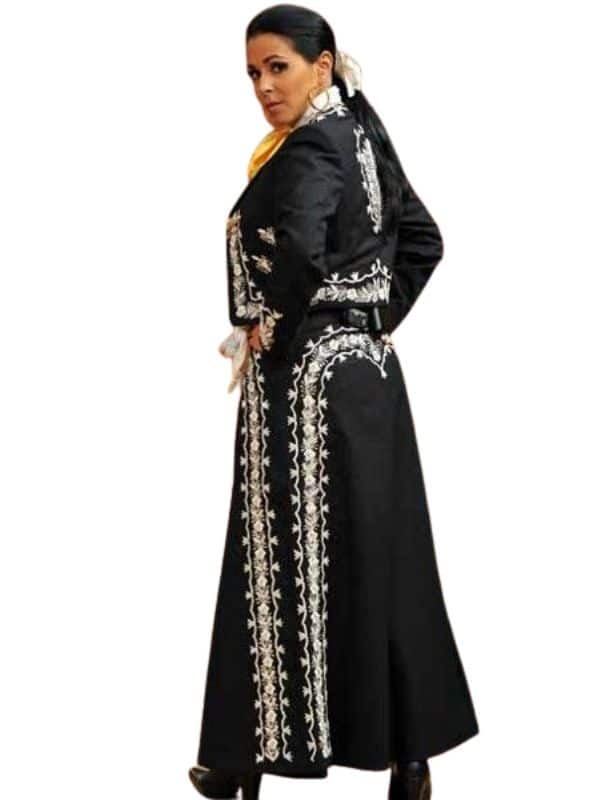
The gala outfit, a variation of the traditional charro suit, is now an acceptable alternative to the tuxedo for formal events in Mexico. Especially eye-catching is the botonera, a collection of silver buttons and adornments. Saddleback Sombrero is another essential piece to complete the charro look.
The wide brim of this hat offers plenty of shade and protection from the sun’s rays. A sombrero’s name is derived from the Spanish word for shade. Mexican vaqueros created Sombra, The sombrero as we know it today, or cowboys, adapting the hats introduced to Mexico by the Spaniards.
Poncho
A poncho is essentially a blanket with a cutout in the center for the wearer’s head. The main fact about the poncho dress is it can keep the wearer dry and warm. As was the case with the serape, which was traditionally woven in subdued tones, the modern variant may feature the addition of hoods or fringes and be patterned in vibrant colors.
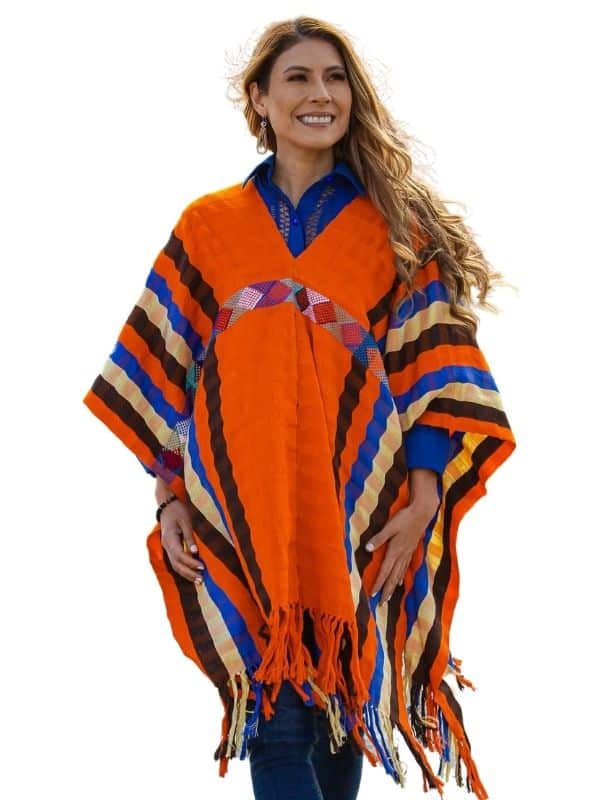
Ponchos have developed into an item of clothing that is worn all over the world. They can be constructed of various materials, including polyester, and are worn by women and children as an item of protective or fashionable apparel.
Faja
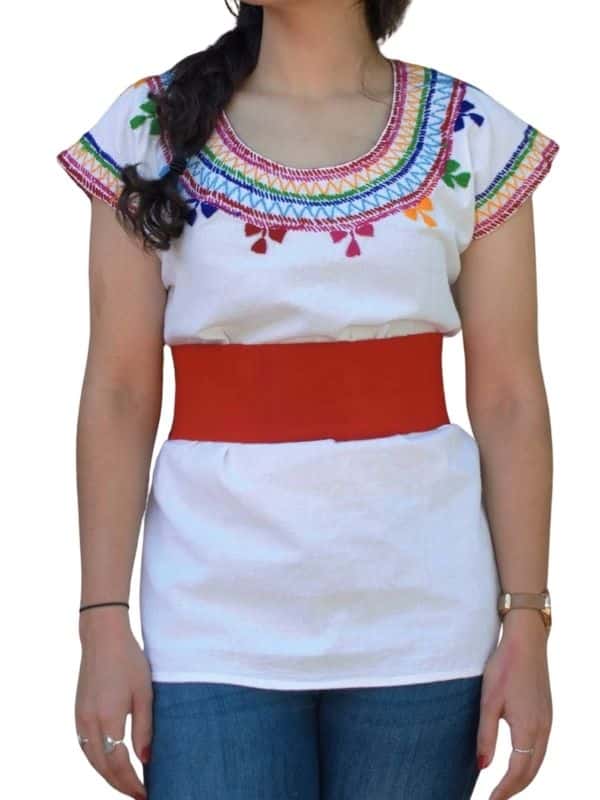
A faja is a long, broad, and colorfully embroidered dress sash about 4 inches wide. It is worn around the waist., typically wrapped around the waist to draw in a huipil or to keep a skirt from falling. Each one, according to tradition, can take up to a month to make, and on occasion, they are embellished in such a way as to convey the narrative of the person who will be wearing them.
Wrap Up
The clothing that people wear in Mexico nowadays is not very dissimilar to the dress worn in Europe and North America; however, this wasn’t always the case. It required people to wear clothes that kept them calm due to the excessive heat of the desert in the north and south parts’s jungles. Traditional Mexican dress for women was made with this in mind. The history, culture, and gorgeousness made these addresses more unique.
Textile Details believe, you don’t even know about the different types of Mexican dresses names correctly before the blog. After reading it, you will get some idea about the culture of traditional Mexican dress female.
You may read our other traditional dresses article:
- Ethiopian Traditional Dresses
- Traditional Mexican Blouses
- Traditional Mexican Wedding Dresses
- Indian Traditional Ethnic Clothing

Pingback: What is a Traditional Mexican Dress Called?